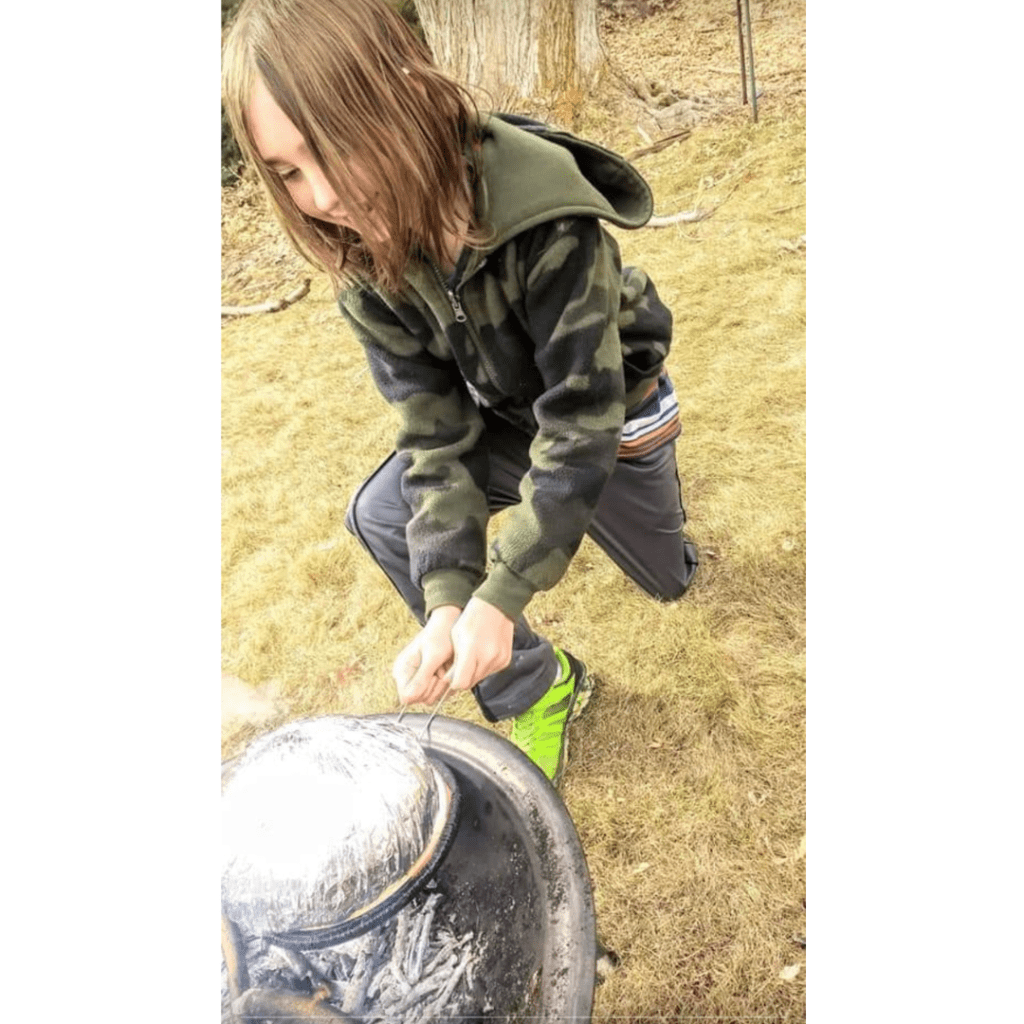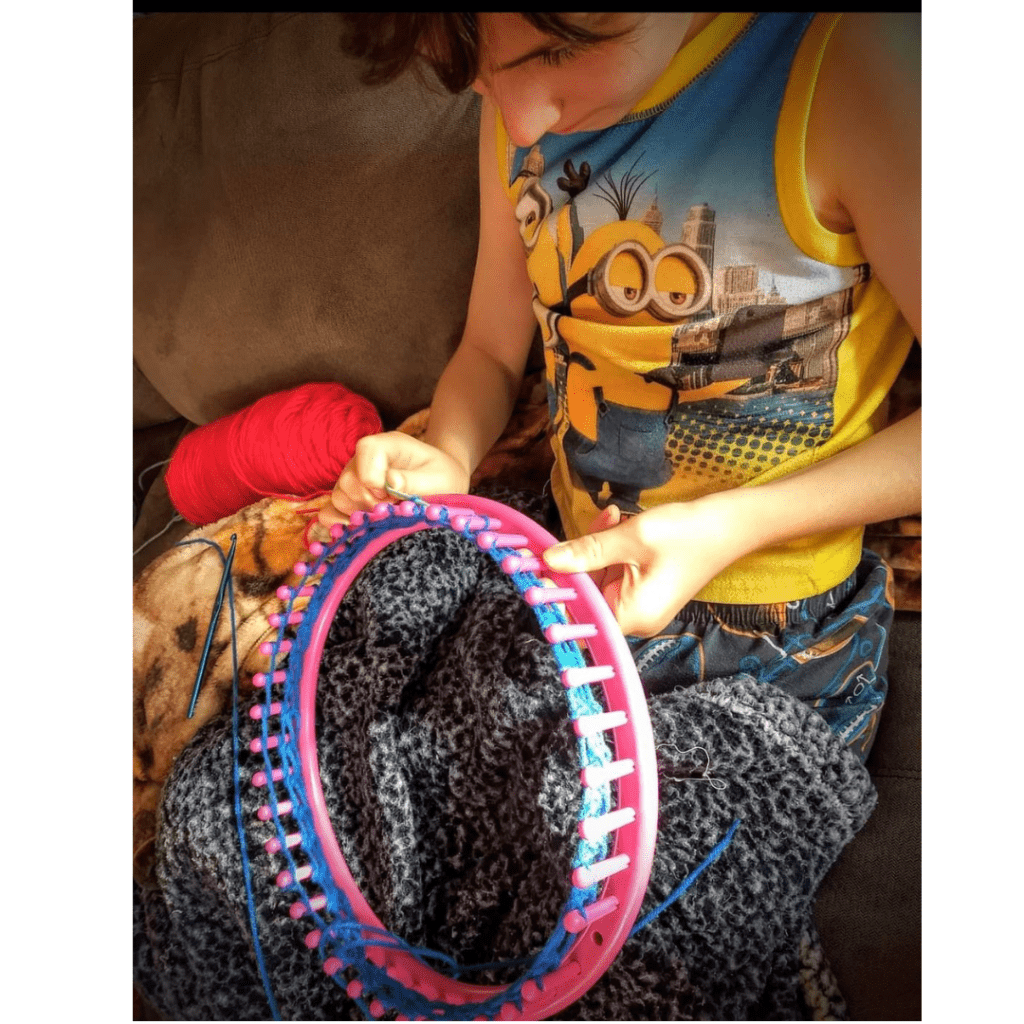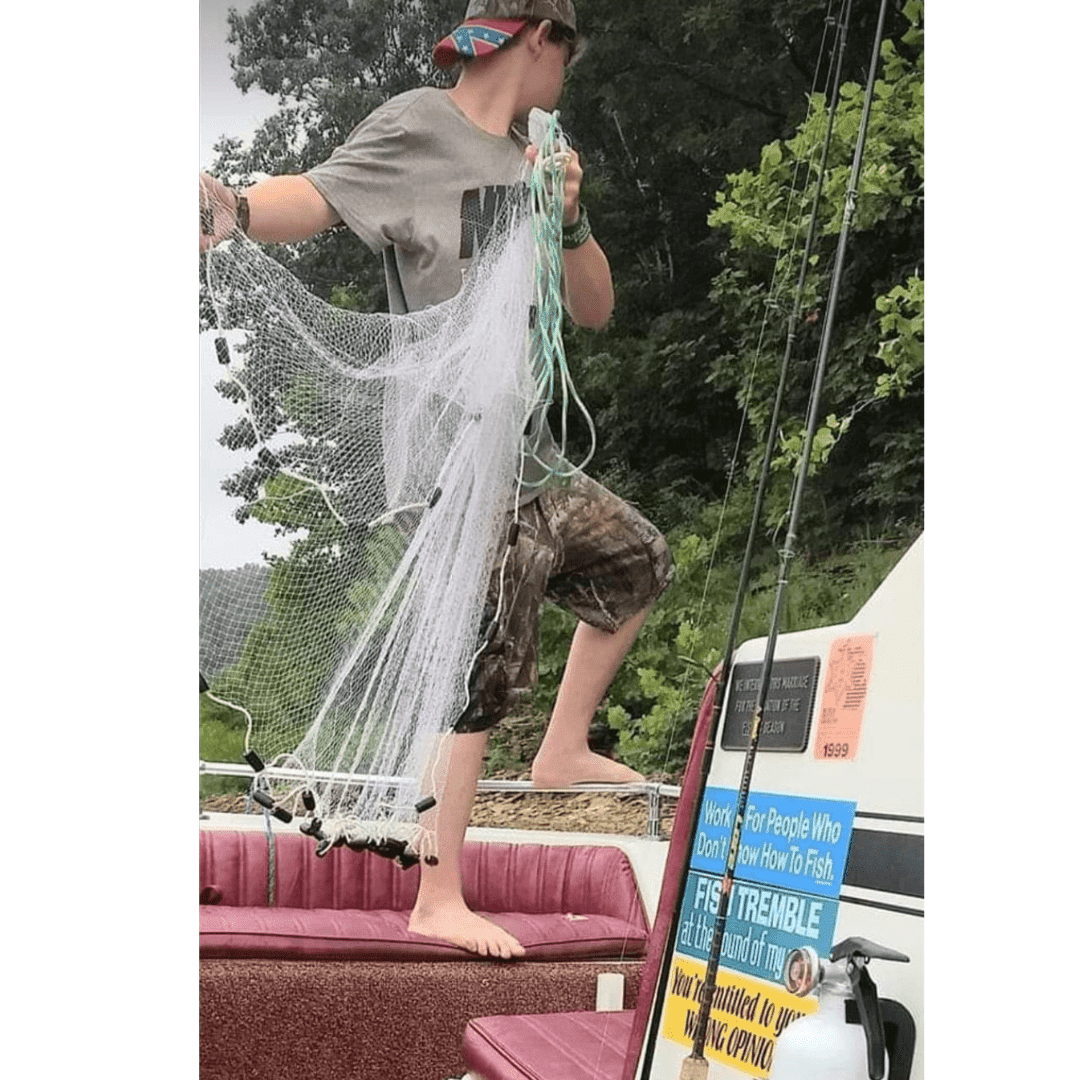Discover how to teach self-sufficiency skills to kids with this practical guide. From gardening and cooking hacks to basic fishing and hunting, learn simple ways to prepare children now for a more resilient and independent future. Perfect for parents, homesteaders, and families who value hands-on learning and lifelong skills.
Teaching kids self-sufficiency skills is one of the greatest gifts you can give them. In a world that often prioritizes convenience over independence, helping children learn how to grow food, cook simple meals, and do basic hunting and fishing equips them with confidence and resilience.
By starting early, you’re not only fostering practical skills but also instilling a sense of responsibility, problem-solving, and resourcefulness that will benefit them for a lifetime. In this guide, I’ll share tips and strategies to help your kids embrace self-sufficiency in fun and meaningful ways.
This is a pinnable post. Tap or hover over any image in this post to pin to your Pinterest Boards.

First Aid and CPR Self-Sufficiency Skills for Kids

Teaching CPR and First Aid to kids is an important life skill that teaches them how to be responsible in emergency situations. It teaches them how to be self-sufficient and be prepared to face situations for others in need. It can help them identify cardiac arrest and call for help if they are not strong enough to perform CPR.
The picture above displays my preschool CPR and First Aid students learning the concepts of life-saving strategies to help others in emergency situations. While these students may be too young to perform CPR on an adult, they are learning the concept of what to do and how to save a life.
When your child is old enough to attend a certified CPR and First Aid course, it is a good idea to sign them up and take them to further learn these skills with a trained professional. It is also a great idea to keep their training up-to-date throughout their lives. This will help build their confidence in themselves and prepare them for their surroundings should they be faced with life-threatening events.
When your child is too young to attend a CPR and First Aid course, you can still teach them the concepts and actions as young as preschool age. In my preschool/Kindergarten classroom, I taught CPR and First Aid using baby dolls. Each of my students earned a printed certificate to take home and show to their parents. They were so proud of themselves!
To learn more about teaching CPR and First Aid to kids, read my other post, which discusses this in further detail.
The Best Activities for First Aid for Kids
Open A Can of Food With Their Bare Hands

Teach your kids how to open a can of food with their bare hands in less than three minutes, no matter their young age. Kids as young as preschool age can open a can of food without a can opener using this simple and fun technique.
Should your kids find themselves in an emergency situation on their own (hopefully not), help them be prepared to open a can of food on their own with their bare hands if they are unable to find a can opener. Not all hope is lost if they are unable to find a can opener once they learn this skill.
Young children and older adults sometimes have a difficult time using can openers because of the turning technique required. If the power goes out, having an electric can opener is useless. Therefore, it is a good idea to teach everyone in your household how to open a can of food with their bare hands. To learn more about this technique, visit my other post, which discusses this in detail, including a short video clip of one of my sons demonstrating it.
How to Open A Can of Food With Your Bare Hands
Knife Safety Self-Sufficiency Skills for Kids

Simple knife skills are important to teach kids. When kids are trusted with knives and are mature enough to properly use them, they will have the confidence and abilities to use knives for many things, such as cutting, slicing, and dicing food, cutting ropes, cutting fishing lines, whittling wood, starting a campfire, and so much more.
Only you will know when your child is ready to use a knife. It is a good idea to use the proper type of knife at first and grow from there as your child progresses in their knowledge of knife safety.
My sons are teenagers, and they have proven themselves to be responsible enough to keep a survival knife in their rooms in the proper casing. They use it while out back on our property to whittle small pieces of wood, start a fire in the fire pit, and take their knives on fishing trips.
To learn more about how you can train your child to safely use a knife, visit my other post, which discusses this topic in further detail.
Knife Safety for Kids: Ultimate Guide to Their Safety
Gardening Self-Sufficiency Skills for Kids

You can teach your children how to grow their own food at a young age. When kids grow their own gardens and see their food growing, they develop a natural connection to their food. They will feel more confident about themselves and have a better appreciation for the food that they eat.
Start small by providing them with their own small 2×2 or 4×4 raised garden box. Allow them to select the vegetables that they want to grow in their garden box. Help them get started in growing their favorite vegetables and teach them about how those types of vegetables grow and what types of care and water requirements are needed. As their plants begin to grow, kids have a natural curiosity to keep attending to their plants.
The market offers gardening tools for all ages, so everyone can participate. Offer your child smaller shovels, cute watering cans, and fun buckets to help them complete their gardening tasks.
Help your child identify weeds and teach them that they need to pluck them out of the garden. Teach your child weed-barrier gardening techniques, such as offering weed-barrier mats or topping the soil with mulch.
Allow your child to plant companion flowers for the types of vegetables they have planted in their garden box. This will show your child that flowers are beneficial to their vegetable plants, and they will see bees and other pollinating insects visiting their plants in their garden.
Helping In the Garden
When children are taught gardening skills on a small scale, their knowledge and interest grow with them. When they become adults, they can grow more and bigger gardens if they desire, and they will be confident since they have had a head start early in their lives.
While it is a good idea to provide your child with a small garden box of their own, it is also important to help them develop skills and responsibility to contribute to the family’s bigger garden. Your child can contribute to the family garden by doing small, but helpful gardening tasks and chores. Again, offer them smaller tools that are easier for them to use. Your child will develop a sense of responsibility and accomplishment when they know they are helping with the family garden.
I wrote a post discussing the Best Gardening Tools for Kids, so be sure to check that out!
5 Best Gardening Tools for Kids to Complete Chores
Hunting and Fishing

Most young kids love to go on hunting and fishing trips. Fishing trips are more common to take kids since it does not require safety courses. When kids grow up hunting and fishing, they develop self-sufficient skills in obtaining their own food. They learn the skills and know-how while growing up.
Hunting and fishing can also teach kids patience, which is an important life skill in having a happy and content life. Have you ever seen the excitement on a child’s face when they catch a fish? Heck, even adults get excited! Catching a fish gives a sense of pride to any individual and helps build confidence and power in one’s own actions.
Your kids will remember all the fun hunting and fishing trips that they have ever gone on. They will have fun tales to tell their future spouses and children, so go ahead and take your child on a hunting or fishing trip!
Ultimate Guide on Campfire Safety for Kids

Teaching your child how to start and maintain a campfire or a fire pit is a great self-sufficient skill for kids to learn. In my photo above, my boy started a small fire in the fire pit on our property. This is just a mobile fire pit that is not used all the time. As you can see in the photo, my son was taught to wet the surrounding area with a water hose before starting his little fire. Wetting the ground prevents the spread of fire.
When a child learns to start and maintain their own small fire, they develop a sense of accomplishment, pride, and confidence. Hey, this sounds a lot like me, too, when I start my own fire each time!
Cooking Over A Fire

Once your child has learned to start their own fire, you can teach them fun ways to cook food with it. In the photo above, one of my sons is cooking over a fire that he made himself. I found those fun Jiffy popcorn poppers for campfires at Walmart!
Those are so fun to cook over the fire. I must warn, however, these things do NOT come with a long handle, so be sure to supervise your children when using these over the fire. As you can see, my son already had his popped and inflated and is just listening to the last sounds of popping before ripping into the buttery goodness of a campfire popcorn snack!
Whittling

With proper knife safety training, your child can become self-sufficient using a knife for fun skills like wood whittling. My dad always sat around campfires or fishing spots, whittling away at something fun. When I was young, I whittled a small hand-sized bow and arrow with a small piece of wood and a fishing line. I whittled up some small arrows from twigs, and I shot them at my sisters 🤣🤣! To be clear, those arrows were the size of my fingers and were not dangerous at all, and could not puncture a thing! They were fun to shoot at my sisters, though!
Okay, so do not teach your children to shoot small whittled arrows at their siblings! Let’s move on!
Knitting

You can teach your child, including your son, to knit. The market offers fun and easy knitting tools for anybody to use. I use them in my preschool and Kindergarten classrooms too! In the photo above, one of my sons is knitting on a loom. When a child learn to knit and completes a project, they develop a sense of confidence in themselves by learning a fun, self-sufficient skill like knitting.
How to Do Homesteading with Kids

Homesteading with kids is a wonderful way to teach self-sufficiency skills and help them grow up with a strong sense of responsibility and connection to the natural world. Engaging children in daily homestead activities—like gardening, caring for animals, preserving food, and basic carpentry—introduces them to valuable life skills in a hands-on way. Not only do they learn practical skills, but they also develop an understanding of where their food comes from and how their efforts contribute to the family’s well-being.
Homesteading encourages problem-solving, patience, and a work ethic that sticks with them as they grow. Kids feel empowered knowing they’re contributing, whether by harvesting vegetables for dinner or helping build a chicken coop. The experience becomes an invaluable part of their education and creates a bond with the land and the family they’ll carry for a lifetime.
Conclusion
Teaching kids self-sufficiency skills is one of the most valuable gifts you can give them. By introducing them to gardening, cooking, crafting, and caring for animals, you’re empowering them with knowledge that fosters confidence, resilience, and a connection to the world around them. These skills go beyond daily tasks; they teach problem-solving, patience, and self-reliance, qualities that will benefit them throughout their lives. Starting small and making it fun helps build a foundation they can expand on as they grow. So, whether you’re working together on a DIY project or cooking from scratch, remember that these experiences are planting seeds for a future where they feel capable and connected. Embrace each lesson as a step toward helping your kids thrive independently and sustainably!
Resources: Here are some helpful resources for further information.
- Teaching Self-Sufficiency – By Practical Family
- 13 Essential Self-Sufficiency Skills for Kids – By Homesteaders of America
- 10 Essential Self-Sufficiency Skills for Kids – By Cambridge Montessori

Frequently Asked Questions
1. What does self-sufficiency mean for kids?
Self-sufficiency for kids means learning age-appropriate life skills that help them become more independent and confident, such as basic cooking, cleaning, problem-solving, and understanding where food and resources come from.
2. At what age should I start teaching self-sufficiency skills?
You can start as early as toddlerhood with simple tasks like putting toys away or helping in the garden, then gradually add more responsibility as children grow.
3. How can I teach self-sufficiency if I live in an apartment or city?
Self-sufficiency is a mindset, not a location. Apartment families can practice cooking from scratch, container gardening, budgeting, DIY repairs, and basic emergency preparedness.
4. Why is teaching self-sufficiency important for kids?
Teaching self-sufficiency builds confidence, resilience, and problem-solving skills, helping kids feel capable and prepared for both everyday life and unexpected situations.
Summary
I hope I have inspired you to plan helpful tips with your kids with these tips and products.
If you were encouraged by this post, I invite you to check out my FREE Printables Page for fun free printables, planners, and charts.
ENTER MY FREE Printables Page HERE
Here are some more of my inspiration posts to check out!
Easy and Fun Nature Crafts for Kids
How to Get Your Teens Out of Their Rooms for Fun Family Games!
Homesteading: How to Do Homesteading with Kids
Preparation: How to Create the Ultimate Bugout Bag for Kids
How To Plan An Exciting Easter Egg Hunt In Your Spring Garden!
DIY Pop-Tart Gingerbread Houses: The Ultimate Holiday Activity for Kids
How to Have a Safe and Exciting Mountain Sledding Experience with Teens!
A-maze-ing Fun In a Corn Maze with Teens
17 Free Outdoor Summer Boredom Busters for Kids
Lake Fishing with Kids: What to Know Before You Go
Ultimate Guide on River Safety for Kids
Why Archery for Kids Teaches a Growth Mindset
Homeschooling Teens With Anxiety: How Easy It Can Improve Grades
5 Best Gardening Tools for Kids to Complete Chores
How to Open A Can of Food With Your Bare Hands
The Best Activities for First Aid for Kids
Knife Safety for Kids: Ultimate Guide to Their Safety
Blessings,
The Off Grid Barefoot Girl




